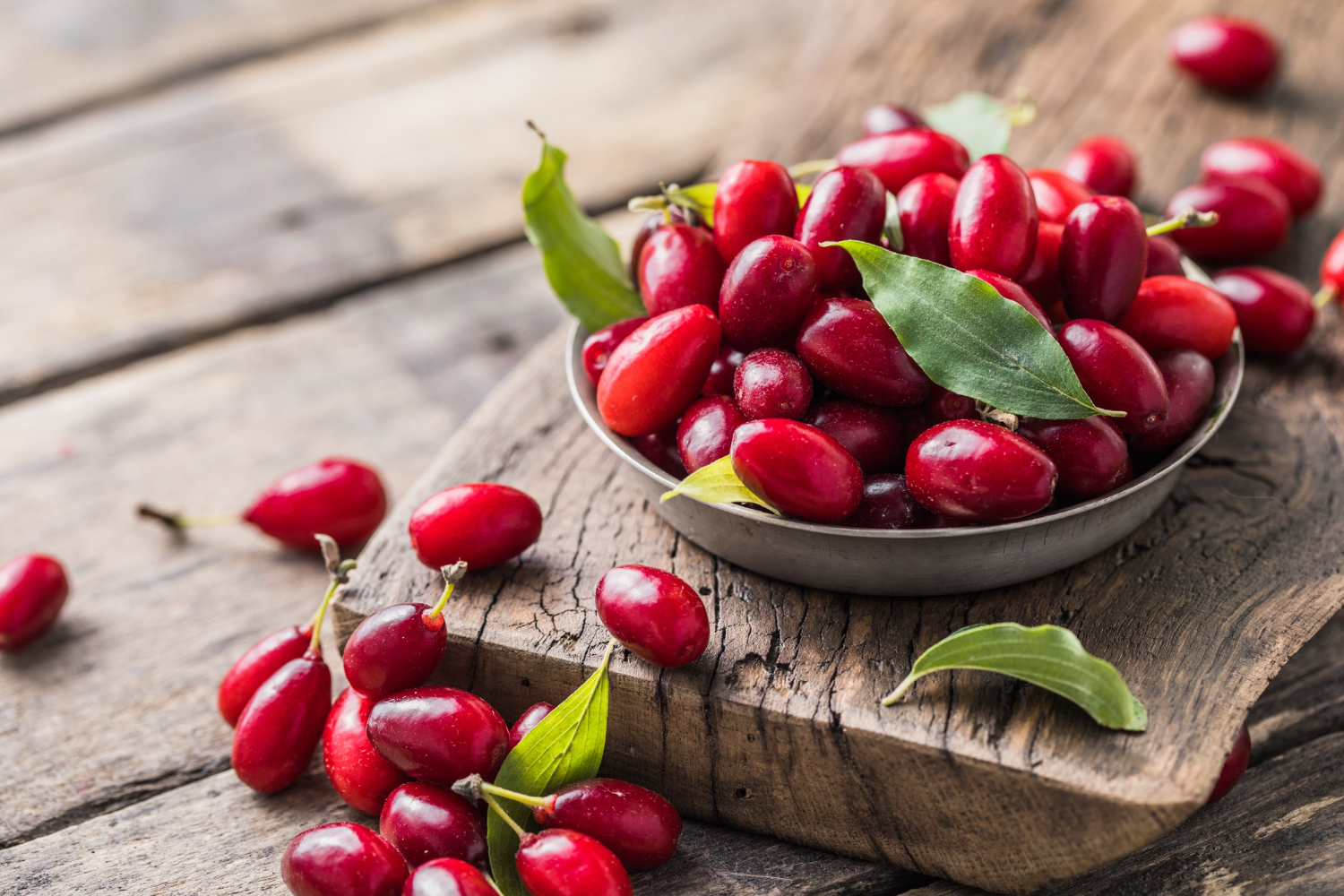In botany, dogwood berries are identified as drupes—and their fruits can grow in sizes between 0.25 to 0.65 inches. They’re in full bloom between September and October. There are clusters of three to six bright red, waxy-looking berries on each plant. With this, dogwood berries are considered the ‘little red trees’ of the berry family.
Why is it called dogwood?
The common misconception about this tree is the fact that it is related to your canine companion. Luckily, this concept is not far-fetched. In the first place, dagge is an Old English term that refers to a pointed wooden implement.
Different people have different thoughts as to why this shrub is known as dogwood. The dogwood’s bark has long been used to treat dogs with mange, so that the term may have derived from ancient folk veterinary medicines. Historically, many dogs perished from eating dogwood tree berries that fell to the ground during colonial times.
Dogwood berries and their current usage
Nowadays, dogwood berries are still a popular berry treat in wildlife.
Some biologists believe that the dogwood tree’s abundance of berries contributes to its widespread popularity. Even though wildlife has access to many seeds and berries in the fall, dogwood tree berries are most sought after. Also, dogwood berries contain calcium and fat—an essential source of nutrition for both migratory birds and local fauna.
But does that mean dogwood berries are edible for humans as well?
The answer is a great yes. However, not all dogwood berries variants found in the wild are considered edible. Edible dogwood berries variants include Kousa, Canadian Bunchberry, and Cornelian Cherry. It is customary to eliminate the astringent skin of the dogwood berries before eating it, but the meat has a peculiar, sweet flavor resembling stone fruits.
Flowering dogwood, a type of dogwood berries, must not be consumed at all costs. According to some accounts, they’re poisonous. Berries are astringent and bitter, and that’s what they’re known for. The clusters of red berries produce fruit all summer and continue to ripen through the fall.
Which Dogwood Berries Are Edible?
Dogwood trees have gorgeous blossoms and unusual fruits, making them a popular ornamental. The berries on all dogwoods are edible, although not all of them are. A variety of dogwood fruit forms, sizes, and colors are available. Some are indigenous to the United States, while others came from Asia, like Kousa Dogwood.
- Kousa dogwood is a native to Korea, Japan, and China. Food preparation and consumption in the culinary arts considered the Japanese dogwood berries (also known as Asian dogwood) purely edible. Therefore, the berry’s rind is typically discarded, which has a harsh taste but is edible. However, the huge seeds, which are typically discarded, can be mashed into jam, marmalade, and other mixes.
- Cornelian cherry dogwood is an ornamental tree from Eurasia. The fruits coming from this tree are considered edible. This fruit is reputed to be delicious despite its sour flavor. Once the seeds have been squeezed out, this fruit is excellent for jams and pies.
- Flowering dogwood, a Southeastern dogwood variant in the US, bears little red berries in the fall that are deadly to humans. Still, several people who have encountered this fruit reported the fruit’s nasty, extremely bitter taste. This distinct bitter taste is due to the toxins found on the flowering dogwood’s pit.
Are Blue Dogwood Berries Edible?
Blue dogwood berries can be consumed safely. There are a lot of berry colors that identify the fruit’s maturity.
Dogwood fruits come in various shapes, sizes, and colors, depending on the array. Dogwood berries are often bright red, although other colors include dark blue, purple, black, and white, and gray.
Species like Kousa, Himalayan, and Silky—known for their showy blossoms, typically contain red fruit that does not turn blue-black with age. Conversely, varieties with clusters of flowers have ripening fruits that are more likely to darken as the season progresses.
Red, blue-black, or white dogwood fruits are the most common colors for fully matured specimens. There is only one type of drupe, a fruit with a seed encased within a stone wall, afterward covered with a fleshy outer layer.
Some are suitable for consumption by humans, but the majority are fit for consumption by birds. In addition, certain dogwood species are poisonous and can harm pets and other animals if not handled properly.
What Are Dogwood Berries Good For?
Dogwoods are a diverse collection of blooming shrubs and small trees. Some of the species in the genus can be classified as subshrubs, which are fast-growing woody plants that go back to the ground in the winter and regrow from buds near the plant’s base. Some species, on the other hand, have stems with alternately arranged leaves.
These plants also have smooth-edged leaves with veins that run parallel to the borders. They are also distinguished by their opposite branching, which makes it easier to spot them. Many dogwood species are available, including natives to Asia, Europe, North America, and numerous cultivars.
Dogwood has a long history of producing alcoholic beverages such as liqueurs, a fruit brandy known as raki, and jams, and sweet berry sauces, among other things. Additionally, dogwood berries have recently garnered notoriety as a food medicine because of the numerous health benefits they provide.
Dizziness, bodily discomfort, and impotence indicate a weak kidney that the dogwood fruit is known to heal. It also replenishes the kidney’s nutrients and revitalizes the organ’s essence by reestablishing its former health.
Most people avoid eating unripe berries because of their acrid flavor. Dogwood berries are still acidic when ripe, but they are luscious when they are. They taste similar to sour cherries. When selecting a dogwood preparation, seek professional medical guidance due to the wide range of species and their close likeness but differing qualities.

